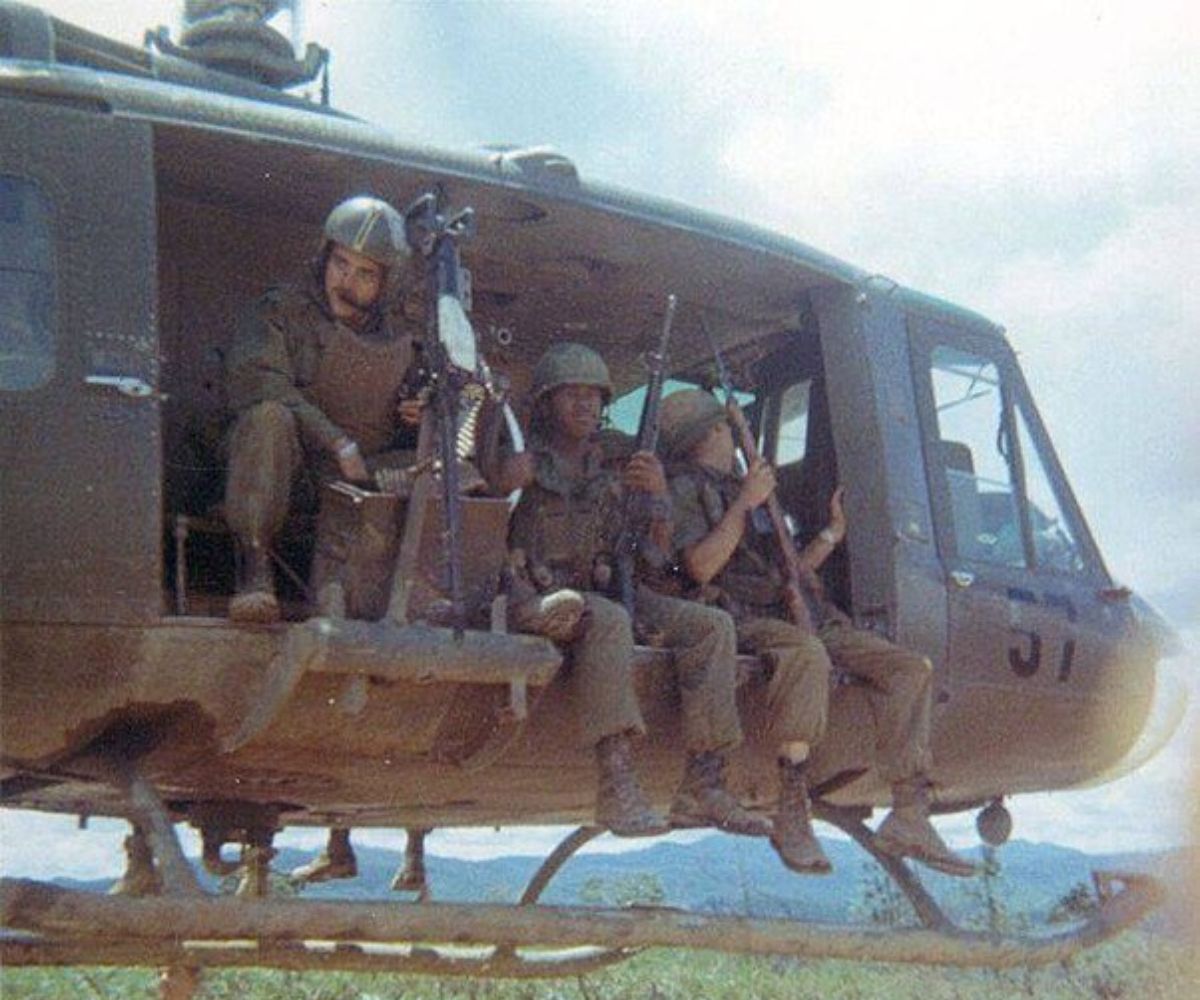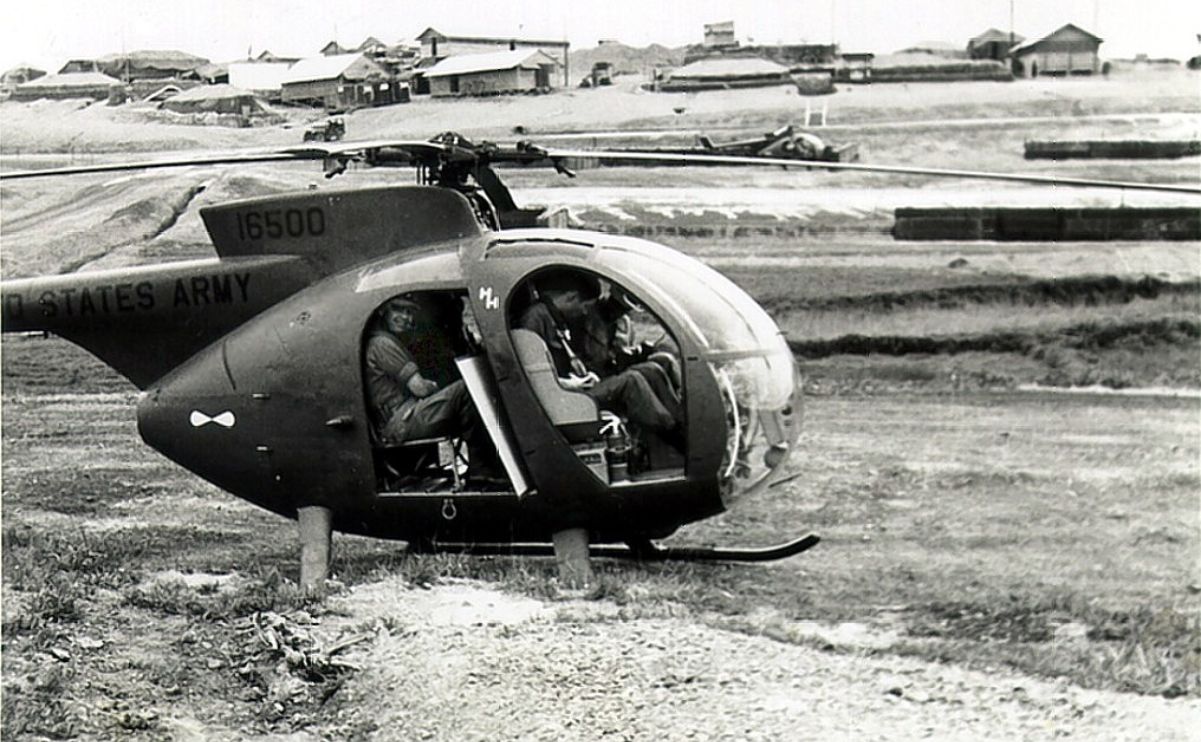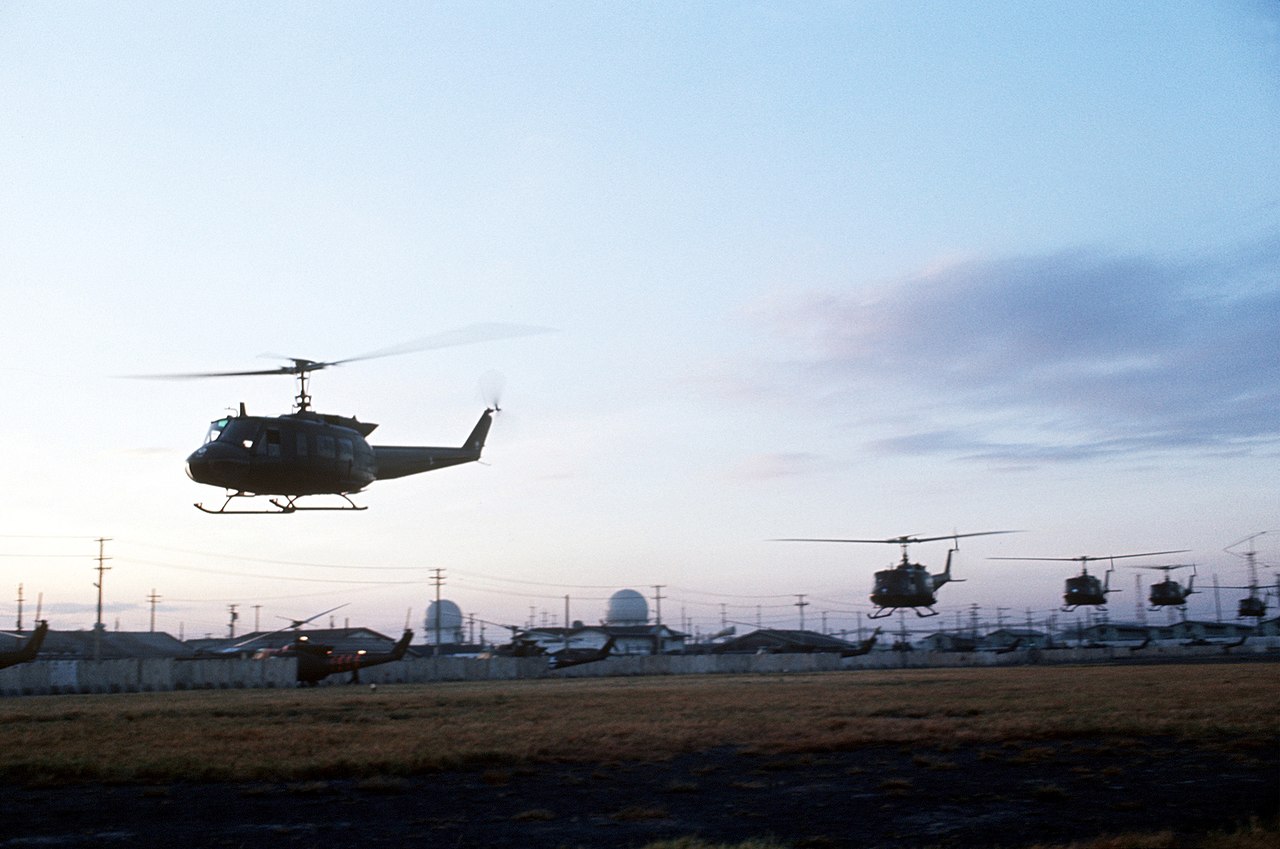The UH-1 Huey
The UH-1 “Iroquois” helicopter, also known as the “Huey” for the phonetic sound of its original designation, HU-1, served as the Army’s workhorse during the Vietnam War. The Army had great expectations for the helicopter’s combat effectiveness, but it took some time for the technology to reach that level of development during World War II. During the Korean War, early helicopter models—like the widely used OH-13 “Sioux” and the USAF H-19—were used for medical evacuation and resupply operations. These early craft’s combat experiences taught valuable information that helped create the UH-1.
The UH-1 Huey during the Vietnam War
The first Hueys were sent to Vietnam in 1958, when they were used in “dustoff” medical evacuation (medevac) operations by US advisors. The Army incorporated the helicopter into its wider operations during the Vietnam War, extending the platform’s role beyond medevac. Because of its reputation for “doing anything a horse could do,” the Huey went from being a tool for troops and supply transport to providing direct support for combat guns.
Many movies about the Vietnam War showed Huey helicopters flying with their doors open. Did UH-1s actually fly, as seen in the movies? Did anyone fall out?
UH-1 Huey helicopters with doors open
Patrick Holland, a former US Army officer who flew aboard UH-1 Hueys, explains on Quora:
‘They always flew with the doors open.

‘1. The crew chief and gunner needed to be able to operate their weapons.
‘2. Loading and unloading in enemy territory was much faster.
‘3. It was the only air conditioning we had.
‘4. I never heard of anyone ever falling out. There are some urban legends of bad guys getting tossed out but I discount these as exaggerated war stories.’
Gordon Wilson, former US Army Colonel who flew aboard UH-1 Huey helicopters in Vietnam, recalls on Quora;
‘In my experience, yes. In the RVN Republic of Vietnam], Hueys of the 101st Airborne Division virtually always flew with doors open and… their doors were installed (i.e., not removed).
‘LOH-6, Light Observation Helicopters, normally flew with doors open, as well. See below:

‘Only one time did I fly in a LOH-6 with doors installed/closed. This, because of declaring a Tactical Emergency (Tac-E) during the Northern Monsoon. The General Support Helicopter Company installed doors, put two pilots in the helicopter and they flew nap-of-the-earth at top speed. It was very exciting and stressful.
‘Some may have fallen out (of Hueys), I can’t say. Normally, they orbited tactical situations and centrifugal force kept one inside despite not wearing a seat belt. Passengers in LOH-6s normally were belted. GEW, Col, USA, (Ret).’
Doors open in the Delta
Paul DeNicola, former UH-1 Huey crew member, recalls:
‘Yes, we flew with doors open in the Delta too. Sometimes there was so much slippery mud on Huey’s floor we thought we might slide out, but no one did to my knowledge. Welcome home.’
Jethro D., another former Huey crew member, says;
‘Doors open.
‘Anyone who suggested they flew with the doors closed never experienced the oppressive heat, miserable smells. Smells? How about dried blood not washed out, the smell of unwashed bodies and underclothes, possibly vomit from the door gunner being caught unawares…
‘Yeah… no… doors open all the time.’
Doors closed at 3000ft
Ray Mason, former UH-1 crew members, recalls;
‘We always flew with Huey doors open except when we got to 3000ft then closed them because of the cold. Sometimes we door gunners flew with field jackets because of the cold. The Loaches [the LOH-6 was nicknamed “Loach” from the acronym for the Light Observation Helicopter (LOH)] flew with the doors off, not open.’

Photo by U.S. Army





